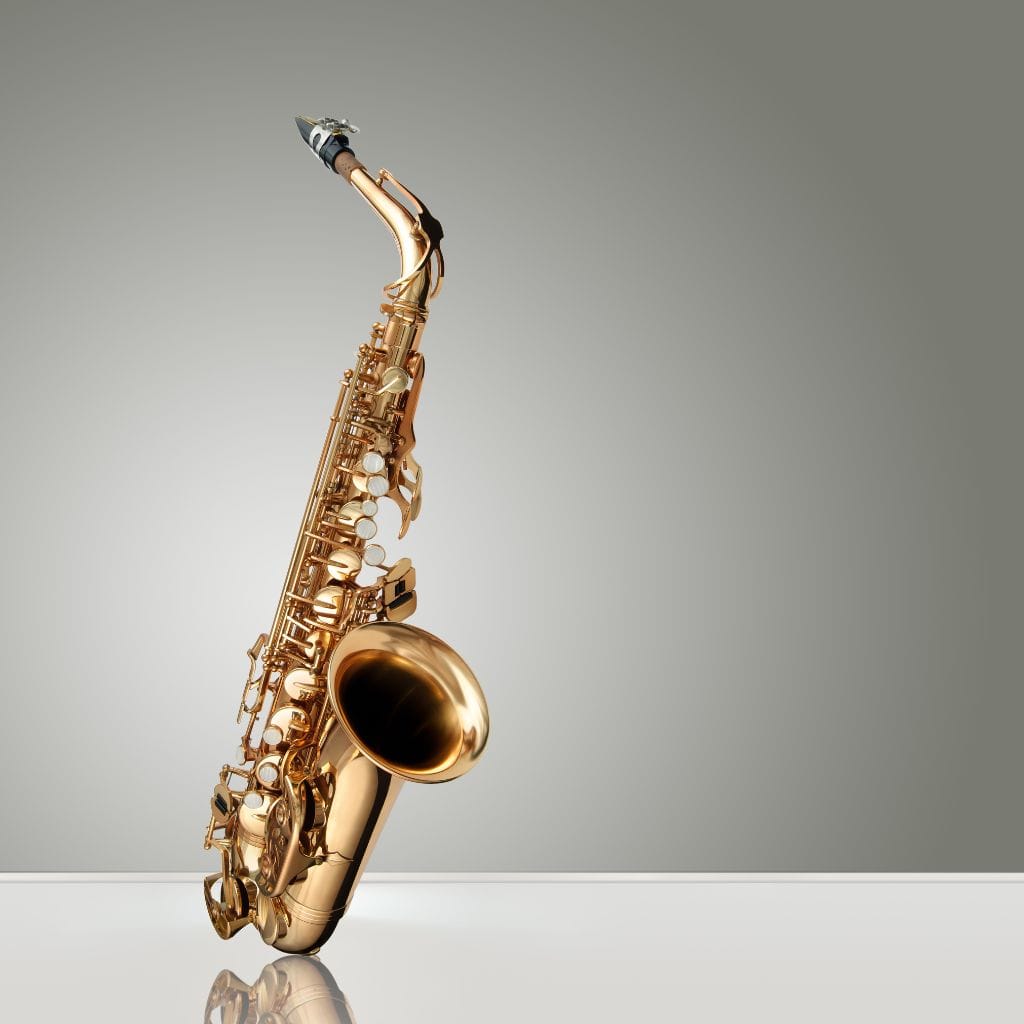Do you want to know how should your lips be shaped when playing your saxophone? Yes, from my online research and talking to friends who played this instrument,
I discovered that you need to shape your lips into a relaxed “U” with a small grin when playing the saxophone, maintaining a solid but not unduly tight embouchure.
Make sure the lips are centred on the reed, with the bottom lip covering the bottom half of the mouthpiece and the top lip softly resting on top. Experiment with lip position and stiffness to achieve the desired tone.
To improve, practice and get advice from a saxophone tutor.
Read more article here:Are Metal Snare Drums Louder Than Wood?{“ True or False}
Let us go deeper:
What Is The Correct Embouchure For A Saxophone?
The correct embouchure for a saxophone involves positioning your mouth, creating a seal with your lips around the mouthpiece, and using your jaw and lip pressure to control the sound.
Experimentation may be needed to find the ideal embouchure, and it can vary depending on the type of saxophone and individual preferences. Regular practice and guidance from a teacher are essential for developing a strong embouchure.
Are You Supposed To Bite Your Bottom Lip When Playing Saxophone?
No, you should not bite your bottom lip when playing the saxophone. Instead, your lower lip should be placed over your bottom teeth, creating a cushion or seal on the reed.
This allows for proper control of the sound and vibration of the reed. Biting the bottom lip can hinder your ability to produce a clear and resonant tone, and it may cause discomfort or injury. The pressure on the reed should come from the jaw and lip position, not from biting the lip.
Should Your Teeth Touch The Mouthpiece Saxophone?
When playing the saxophone, your upper teeth should rest lightly on top of the mouthpiece, providing stability and control of the angle, while your lower teeth should be slightly separated from the mouthpiece.
The goal is to strike a balance between having enough contact for control without applying excessive pressure and ensuring a comfortable and relaxed embouchure.
Is Double Lip Embouchure Bad?
A double lip embouchure, where both the upper and lower lips make contact with the mouthpiece of a woodwind instrument, is a valid technique with pros and cons.
It can produce a warm tone and be comfortable for some players but may require more effort to develop and might not be suitable for all playing styles. Whether it’s “bad” depends on individual preferences and goals, and consulting with a qualified teacher is recommended.
Should You Puff Your Cheeks When Playing Saxophone?
Avoid puffing your cheeks when playing the saxophone. Cheek puffing can lead to poor embouchure control, intonation issues, reduced stamina and decreased sound quality.
Maintain proper technique by keeping your cheeks flat and firm while controlling airflow with your diaphragm and using your embouchure muscles to shape your sound. Consult a saxophone teacher if you need guidance in improving your playing technique.
What Does Playing Saxophone Do To Your Face?
Playing the saxophone can have several effects on your face, including strengthening facial muscles, improving endurance, and developing a more refined embouchure.
These changes are generally positive and contribute to your ability to control and produce sound on the instrument.
Proper technique and guidance from a teacher can help minimize any potential negative impacts.
Do You Tongue Every Note On The Sax?
Saxophonists do not tongue every note by default. Whether you tongue a note or not depends on the musical context, desired articulation, and personal expression.
Tonguing is used for articulation, but legato (slurring) is also employed for smooth and connected passages. The choice of tonguing or slurring varies based on the music being played.
What Is A Slap Tongue On The Saxophone?
Slap tongue is an extended technique used by saxophonists to create a percussive and rhythmic effect on the instrument. It involves briefly sealing the tongue against the reed, and then releasing it to make a “slap” or “pop” sound.
This technique is used to add unique and rhythmic elements to saxophone playing and is often found in jazz and contemporary music.
How Does The Sax Mouthpiece Affect The Sound?
The saxophone mouthpiece significantly affects the instrument’s sound. It influences tone quality, projection, response, intonation, and articulation.
The mouthpiece’s design, chamber size, baffle shape, tip opening, and materials all play a role in shaping the saxophone’s sound. Selecting the right mouthpiece is a matter of personal preference and should align with the player’s musical goals and playing style.
Should I Brush My Teeth Before Playing The Saxophone?
Maintaining good oral hygiene, including regular teeth brushing, is generally a good practice for saxophonists. While there’s no strict requirement to brush your teeth immediately before playing, clean teeth and a healthy mouth can contribute to better tone quality, embouchure control, breath control, and overall comfort while playing the saxophone.
Consistent oral hygiene routines help ensure a clean and fresh mouth for playing.
Conclusion
Now that we have learnt that when playing the saxophone, the form of your lips is critical to producing the correct tone and sound quality. Maintain a solid yet relaxed embouchure, with your lower lip curled slightly over your bottom teeth and your upper teeth resting gently on top of the mouthpiece, to enhance your saxophone playing. Finding the perfect mix of lip pressure and relaxation, experimenting with mouthpiece positioning, and adjusting to the individual demands of your playing style and saxophone are all important factors in effectively moulding your lips for saxophone performance. Regular practice and instruction from a good teacher may assist you in refining and mastering your embouchure for a rich, deep voice.

